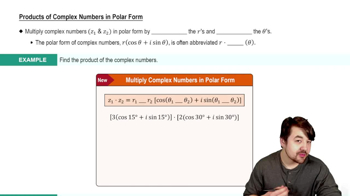Textbook Question
Give an expression that generates all angles coterminal with an angle of π/2 radians. Let n represent any integer.
861
views
 Verified step by step guidance
Verified step by step guidance Verified video answer for a similar problem:
Verified video answer for a similar problem:


 3:35m
3:35mMaster Intro to Complementary & Supplementary Angles with a bite sized video explanation from Patrick
Start learning